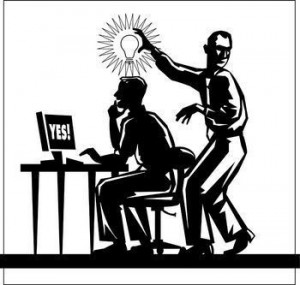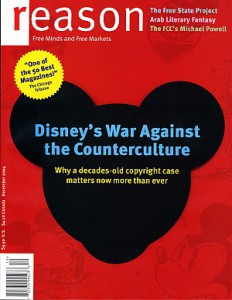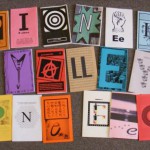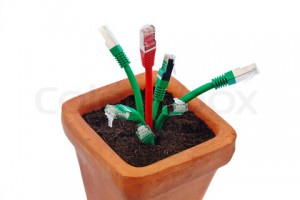 Do we steal ideas and not even know it? In elementary school before the Internet was used daily, I would write an essay by copying striaght out of my textbook. I would do this and give no credit to the author. I assumed it was already known I could not have come up with that idea, and it was also known I copied it from somewhere. I was a kid, so who cared. Widdicombe writes of an author who was notorious for plagiarising various authors to wright his own book. It was like an addiction. Even he believed he was not doing anything wrong at one point. Later he became paranoid at the theft of ideas he was guilty of. Isserman’s article says we all commit plagiarism and are not aware of it. I was a kid so no one paid attention to my innocent theft. Today I understand the reward in being original. Even though I understand this, I still ask do we steal ideas and not even know it?
Do we steal ideas and not even know it? In elementary school before the Internet was used daily, I would write an essay by copying striaght out of my textbook. I would do this and give no credit to the author. I assumed it was already known I could not have come up with that idea, and it was also known I copied it from somewhere. I was a kid, so who cared. Widdicombe writes of an author who was notorious for plagiarising various authors to wright his own book. It was like an addiction. Even he believed he was not doing anything wrong at one point. Later he became paranoid at the theft of ideas he was guilty of. Isserman’s article says we all commit plagiarism and are not aware of it. I was a kid so no one paid attention to my innocent theft. Today I understand the reward in being original. Even though I understand this, I still ask do we steal ideas and not even know it?
Author Archives: Apples
Since the 1700s copyright laws have exsisted. Grey also speaks about how the laws have became stricter and more longer, lasting even until the creator passes away. The question is does these laws restrict us from naturally and freely being creative, are the laws “choking” our creativeness. Lessing passionately speaks about, copyright laws suffocating our thoughts, and most importantly effecting our future thinkers, our children. Disney and other corporations are protected by these copyright laws. After watching Faden’s production, I researched Disney and copyrights on Wikipedia. The Copyright Term Extension Act was lobbied by Disney so much it was nicknamed, the Mickey Mouse Protection Act. Even educators and learners are feeling the effects of copyright laws because some teachers do not want to be sued. Center for Social Media’s document shows the collection of facts to take into account with fair use in the education system. All this leaves me to think, is our creative right being hindered?
Researching in research.
Researching information leads us to new ideas. Ideas that help advance our thoughts to understanding subjects from different angles. Wikipedia has users researching various internet pages of endless subjects. The same pages are being vandalized and edited again by their creators. Wikipedia has been created by researchers for researchers, with it’s most impressive aspect being that it is non-profit. It is rather charming as Baker might have put it. Math being used to create research data has also been applied to researching cures for dieases in Tufte’s article. These large amounts of data are necessary to find little details that are invaluable as seen in Lohr’s reading about John Snow and the town’s well handle. The “Web 2.0” article shows us that all this researched data we find on the web. Which includes us and just about everything else we can think of, is evolving into a world wide web were we are the main subjects being researched.
“The naked magazine, zine.”
- Is this the truth?
- 2013 Zinefest.
The truth is what we all seek. Which brings us to the question what is the truth? Humans absorb information everyday and we filter what is logical from illogical. The idea is some of us are well more informed then others when it comes to filtering data. Our filters have a foundation created by who ever raised us. Then it is the world that we interact with that really structures our information filtering. Thomas Eland touches on this, suggesting we should question our information suppliers, and look at alternative media to be well informed. Fred Wright, gives us a history of zine always being an alternative media. People have personal ideas, they wish to voice. Zine gives us a easy opportunity to nakedly express our ideas. “Zines 101 – A Quick Guide to Zines,” is evidence to the easy process of creating and sharing your idea. In my opinion, the truth is what we believe and how long we believe it for.
Bonsai Technology
Human beings started crawling, walking, running, swimming, driving, and finally flying. Content is making similar progress from being physical to now digital. Meikle and Young undoubtedly recognize the way technology is changing. They recognize these powerful changes and understand we play a valuable role in the way we choose to cook and digest our communication’s technology. A few examples can be seen by Sean Poynton Brna talking about MP3’s being “burgers” and “vinyl”s being steaks, if our quality of music is being downgraded by MP3’s compression technology. Ben Sisario writes about a music downloading service Muve, making phones with their program, and the monthly cell phone bill including downloading fees. The last example is music artist still need record labels in Serona Elton’s article. Do artist self release their albums digitally, or do they need a label behind them handling every detail for them. We are capable of controlling technology, the question is in which direction we will head? Like a Bonsai tree we must shape technology using the knowledge we have.
Authors, audience, and media technologies.
An idea is the main point of using media. Spreading an idea has been so important, that we have created differnt outlets to carry the message. Using one outlet at a time has been the main way to communicate an idea. Today an idea will reach the audience through not just one, but multiple outlets. The method has changed the way an audience absorbs information. Clearly there is a growth in the way an idea is sent. Craig Mod, talks about losing part of the intimate knowlege gained by the way an audience recieves an idea from just one outlet. Where the question is asked how important is it to maintain the original ways of sending an idea. The article, “Media Covergence,” by Graham Meikle and Sherman Young also bring raise to the question of how digital media affects the idea that is sent? The audience becoming authors and being able to interact with the idea which is able to be modified. I belive both articles are concerned on persevering an idea from the way new media technology can disrupt the integery of the idea.
Departing on an Informational Journey.
Our world is full of evolving information, that is constantly adapting to the way everyone uses knowledge. Reading the first chapter in William Badke’s, “Research Strategies: finding your way through the information fog,” embarks the reader on the ever growing infinite world of researching information. There is such a large quantity of information where the quality of the information we research is effected. In the early life of knowledge, people were given the job to safeguard important facts. Until writing became the next secure way to pass along information, followed by the printing press and finally the internet. Since knowledge is easily accessible today, such things as the information’s author, credibility, and main objective has to be validated.
Chapter 8 helps us to learn how to navigate different methods to efficiently research information we need. Reading this chapter shows us that researching is performed best when looking at the details of information and not getting lost in the extra knowledge, unless it is really necessary. Using the table of contents, preface, index, and main points of a chapter or book can help us find the authors main ideas on the subject. Methods such as photo copying, note taking, using a computer, and writing can help a researcher collect information to use later. There are pros and cons to using different techniques of information gathering. A researcher should beware of plagiarizing when writing there paper and using different methods of collecting notes.






